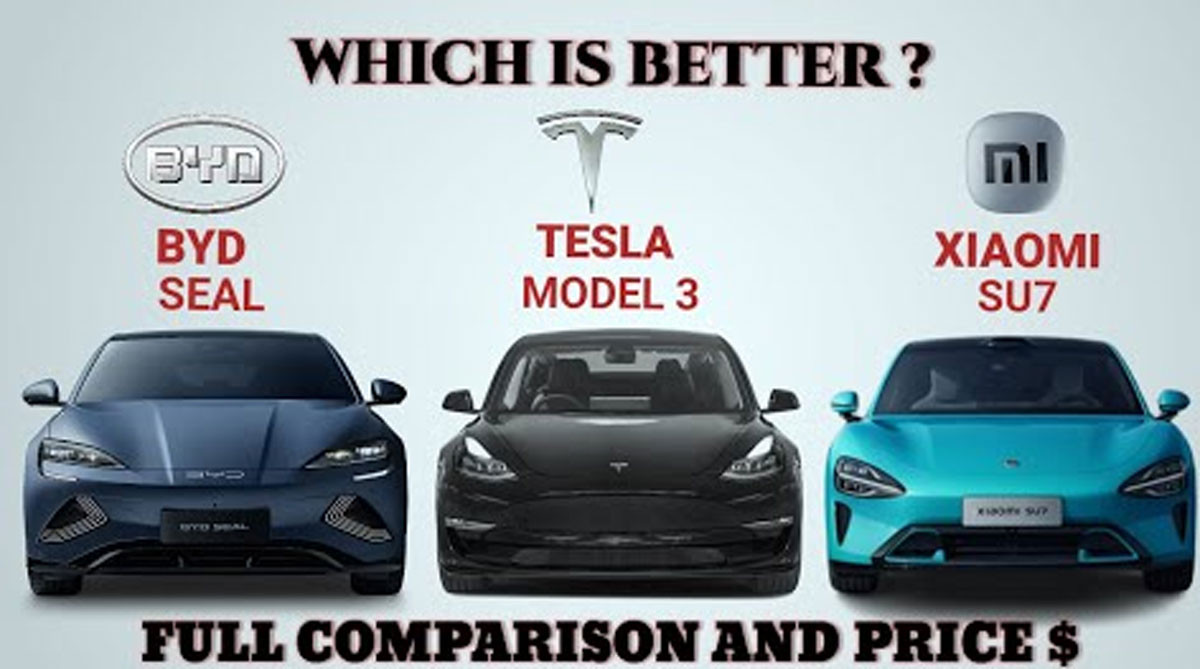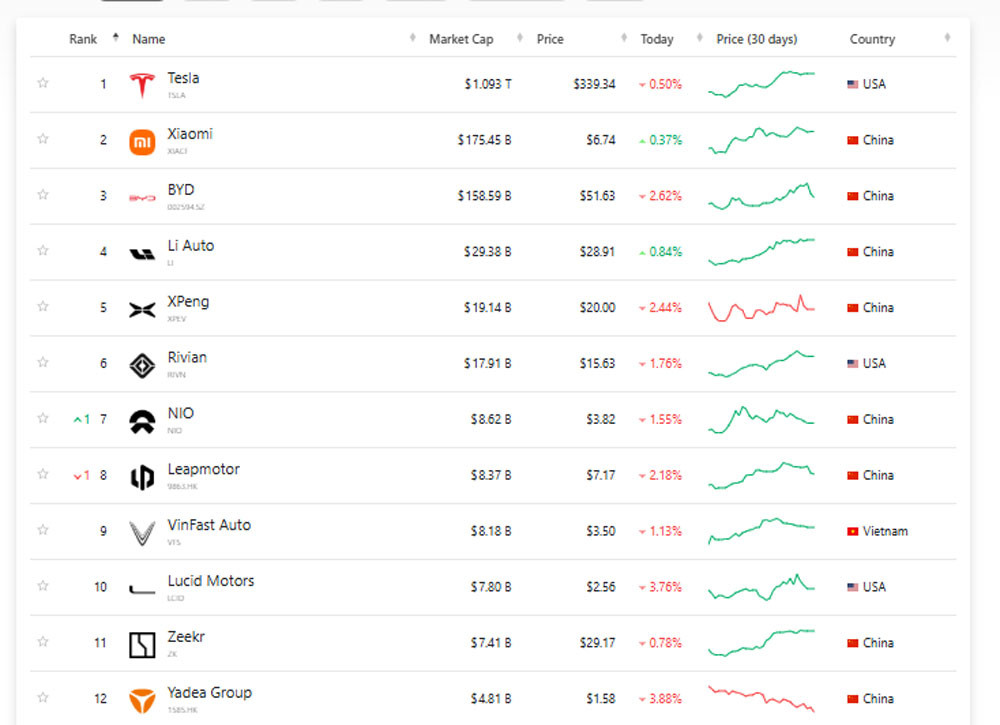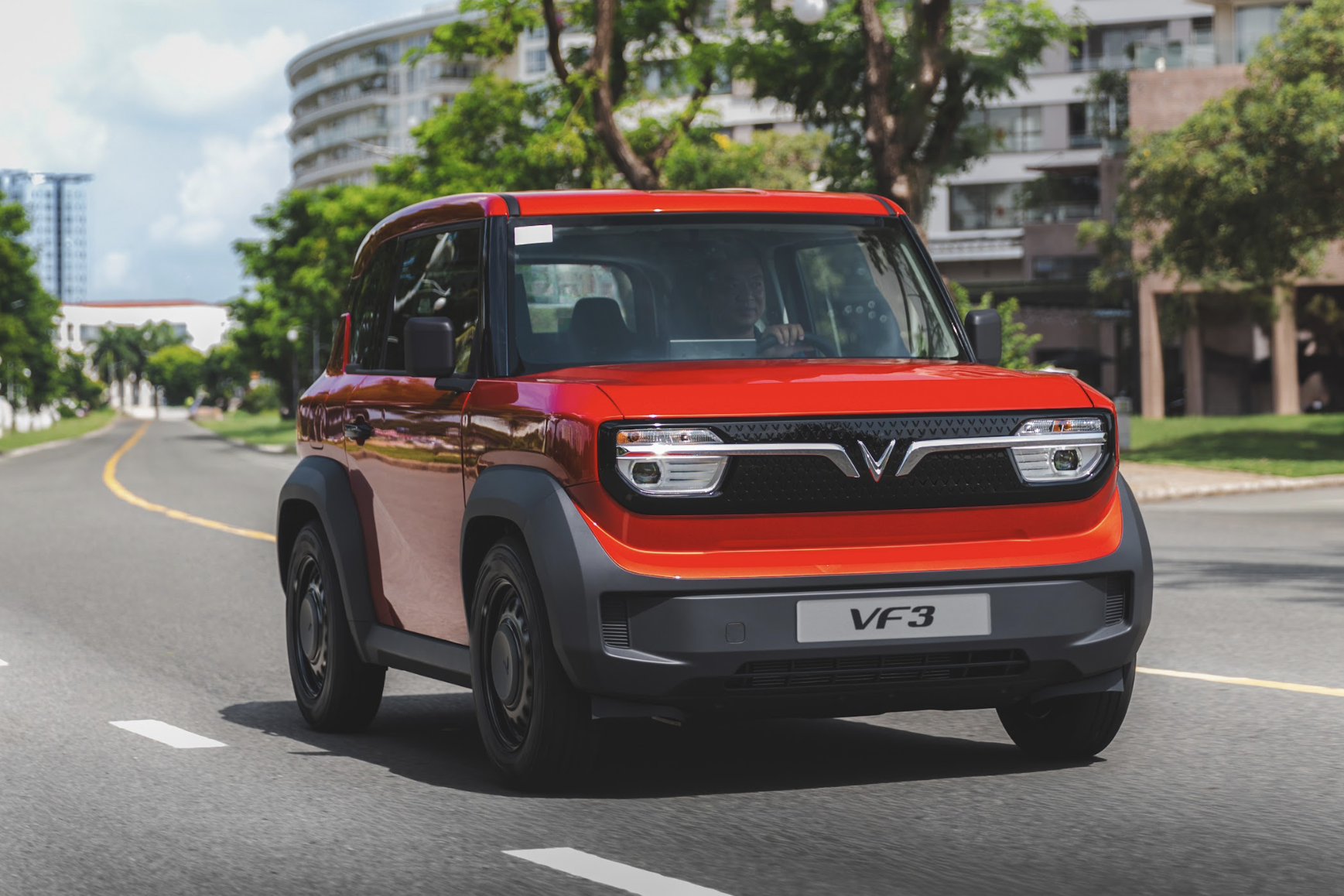The trend of consolidation and the shift to hybrid vehicles, rather than pure electric vehicles, is reshaping the industry order.
A quiet but powerful shift
The year 2025 marks a turning point in the global auto industry with unprecedented fluctuations. After nearly 5 months of the year, the industry order has changed quite clearly. Chinese car manufacturers such as BYD and Xiaomi have emerged strongly, challenging the position of Tesla and traditional manufacturers.
For the first time, BYD surpassed Tesla in battery electric vehicle (BEV) sales in Europe in April 2025, recording an impressive growth of 359%, according to data from Jato. Meanwhile, Tesla saw sales decline 49% in the region, affected by protests against CEO Elon Musk and fierce competition from rivals.
BYD’s surge is no coincidence. In 2024, the Chinese automaker sold 4.27 million new energy vehicles (NEVs), up more than 41% year-on-year, far surpassing Tesla’s 1.79 million pure electric vehicles.
In particular, BYD's plug-in hybrid electric vehicles (PHEVs) account for 58% of total sales, equivalent to 2.49 million units in 2024, compared to 52% in 2023. BYD's PHEV sales increased by 73% year-on-year. In 2024, BYD's pure electric vehicles accounted for only 41.5%.

The flexibility in product strategy, combining PHEV and BEV, has helped BYD meet diverse market needs, especially in Europe, where consumers are not ready to completely abandon gasoline engines.
Meanwhile, Xiaomi, a newcomer in China's auto industry, surprised everyone when its market capitalization surpassed BYD's, reaching $175 billion compared to BYD's $159 billion as of May 27.
Xiaomi's growth comes from the very low prices of many of its car lines, as well as thanks to its strategy of integrating AI technology and automobiles, especially with smart electric and hybrid cars.
Still, Tesla remains the market leader, with $1.09 trillion as of May 27, but that figure hardly reflects the full extent of the risks Tesla faces.
Tesla’s car sales fell 1.1% in 2024, the first decline since its launch. Tesla’s stock has been volatile, falling from $480 per share at the end of 2024 to $220 per share in March 2025, before recovering to $340 per share by the end of May.
Tesla's decline comes not only from competition but also from internal factors. CEO Elon Musk is said to be distracted by focusing on mega-projects such as X, SpaceX and his role as an advisor on administrative reform for US President Donald Trump.
Tesla’s $250 million campaign to support Trump during the election may not have brought many clear benefits, disappointing investors. Meanwhile, Trump’s protectionist policies, including the executive order ending tax credits for electric vehicles... may also affect Tesla.

New trends and prospects of the automotive industry
The auto industry in 2025 is witnessing fierce competition, which could lead to a wave of mergers to cope with huge research and development (R&D) costs.
In mid-February, Honda and Nissan scrapped a planned merger that had been announced by the end of 2024. However, there is still the possibility of major mergers in the future to compete with electric vehicle rivals from the US and China. Japanese automakers, known for their reliability and hybrid technology, are ramping up resources to counter emerging giants such as BYD and Xiaomi.
A strong trend emerging in early 2025 is the shift from pure electric vehicles (BEVs) to plug-in hybrids. BYD, despite being a leader in electric vehicles, has been nimbly shifting to PHEVs, with PHEV sales surpassing BEVs in 2024.
In Europe, the giant BYD plans to launch at least two PHEV models by 2025. Honda also reduced its investment plan in BEVs, from $69 billion to $48 billion, focusing on developing new hybrid systems with the goal of selling 2.2-2.3 million hybrid vehicles by 2030.
Similarly, Porsche has revised its 2030 target to 80% electric vehicles, prioritizing the development of more hybrid and internal combustion engine models. BMW has even called focusing solely on BEVs a “dead end,” emphasizing its diversification strategy with gasoline, diesel, hybrid and hydrogen vehicles.
This shift reflects the fact that electric vehicles are a long-term trend, but high development costs and low profits make automakers cautious. Strict environmental regulations, such as in Europe, still push for electrification, but PHEVs become an intermediate solution, especially when EU tariffs on Chinese EVs (17-35%) increase costs.
In the US, Mr Trump’s policies, such as eliminating the electric vehicle tax credit, have made it difficult for US automakers to compete with rivals in Asia and Europe, where governments continue to support electrification.
The global auto industry is entering a period of restructuring. Chinese automakers, led by BYD and Xiaomi, are reshaping the order with rapid technological development and a strategy of localizing production in Europe.
BYD, with factories in Hungary and Türkiye, is overcoming tariff barriers, while Xiaomi is leveraging AI to create smart cars.
On the contrary, Tesla faces the risk of falling behind if it fails to solve its sales problems and Elon Musk's distraction.
Japanese automakers such as Honda and Nissan are also considering cooperation, which can consolidate their positions and accelerate technological innovation so as not to be left behind. It can be seen that the automotive industry in 2025 is not only a technology race but also a strategic problem, where flexibility and adaptability will be the deciding factors for victory or defeat.

Source: https://vietnamnet.vn/the-tran-o-to-toan-cau-dao-chieu-thay-doi-khong-ngo-nguy-co-moi-2405218.html







![[Photo] International community congratulates Vietnam on having more landscapes recognized as World Cultural Heritage](https://vphoto.vietnam.vn/thumb/1200x675/vietnam/resource/IMAGE/2025/7/13/58ec71f73ae644bfb5bab9c99043bb7d)





















































![[Photo] International community congratulates Vietnam on having more landscapes recognized as World Cultural Heritage](https://vphoto.vietnam.vn/thumb/402x226/vietnam/resource/IMAGE/2025/7/13/58ec71f73ae644bfb5bab9c99043bb7d)






































Comment (0)